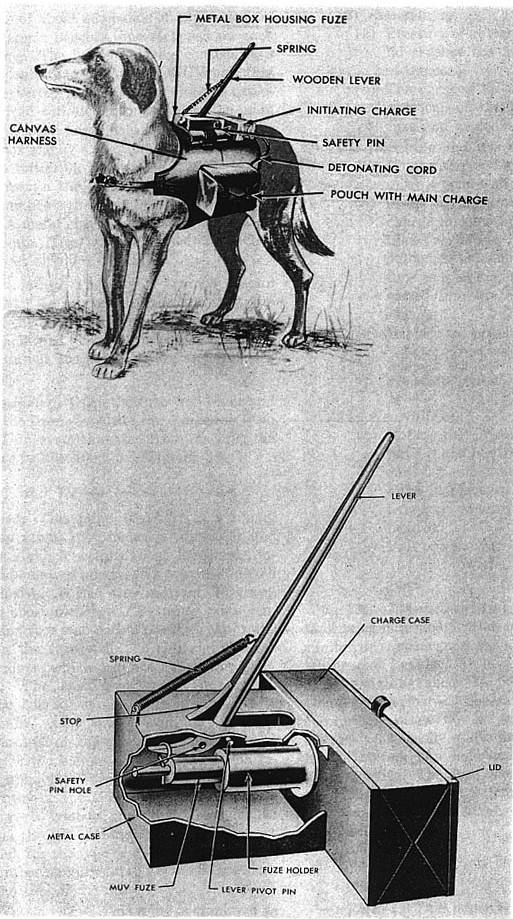There were several reasons that these methods didn’t work. To drop the bomb, the dogs had to pull on a belt with his teeth to release it. This proved to be too complicated, and often the dog would simply return to its handler without releasing the bomb. Secondly, remotes were too expensive at the time to be used practically, so timers would be used more often instead. If the dog returned to his handler with the bomb still attached, he would have killed the handler and himself. Even if the bomb was released under the tank, if the tank was in motion and the timing wasn’t set just so, the bomb would simply explode without doing any damage to the enemy tank.

The Soviets scrapped their initial plan, but unfortunately for Fido, they came up with a new one. Rather than drop a bomb, explosives would be strapped to the dog. When the dog went under the tank, the bomb would be triggered, killing the dog (and, hopefully, disabling the tank).
As if ending their life wasn’t enough, the training involved wasn’t exactly a walk in the park. The dogs were starved, and then food was placed under a practice tank, training them to think that food was under all tanks. After a while, additional battle sounds were added to their practice runs so that they wouldn’t be spooked when they were running under the real thing.
Anti-tank dogs started being used in earnest in 1941, when German forces advanced on Soviet lands. Thirty dogs kicked off what would be a rather lacklustre debut for the exploding dog-force; indeed, the dogs were so ineffective that the Soviet military was accused of simply sacrificing them. Part of the problem was that many of the dogs refused to dive under the tanks in the field. They were being shot at, which hadn’t happened in training, and they were understandably not willing to dive under some huge “beast” that was seemingly trying to kill them. Food can only motivate an animal so much.
Whether they were useful or not, anti-tank dogs started to be used less and less from 1942 onwards, though there were anti-tank dogs that continued to be trained until 1996.
While the Soviets were perhaps the most prominent users of anti-tank dogs, they were trained in other countries, too, including Japan and the United States. Much more recently, bombs were strapped to dogs as late as 2007 when insurgents attempted to use them during the Iraq War. In this case, there’s only one documented case of a bomb actually being detonated while attached to a dog though; protests rose up among Muslims who believe that animals should be killed only for food.